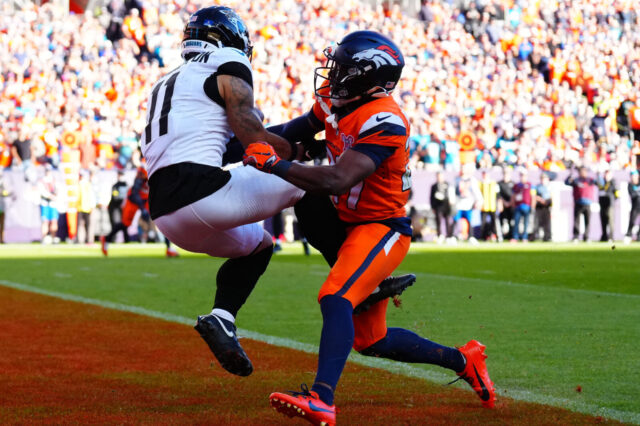EDITOR’S NOTE: Dr. Samuel Jay is an Assistant Professor of Rhetoric at Metropolitan State University of Denver, co-host of the critical-sports podcast Sports Nerds, and owner of Jay Communication Solutions. He loves sports, to a fault. Dr. Jay periodically provides guest editorial to Mile High Sports.
The term redevelopment is a euphemism: It replaces another word, specifically, one that conveyed something harsher, something that could have caused an undesirable reaction.
For example, I was considered, by my high school basketball coaches, to be a role player; that was their euphemism for the fact I did not have the talent or athleticism to play enough to significantly impact a game.
My coaches were good people; they did not want the undesirable reaction the latter phrasing would have produced and deployed the role player euphemism instead.
Redevelopment is often accompanied by other euphemisms like revitalize, rejuvenate, and transform, and it communicates the premise that whatever was redeveloped was in need of change.
In other words, the act of redeveloping actually affirms the inadequacy of the thing that was redeveloped. More often than not, it also affirms the legitimacy of the those doing the redeveloping. As a result, when the word redevelopment is used, we rarely question the act or the ones doing it.
Take this wordplay and toss in some sports to further camouflage the action and its actors and you have redevelopment with an added level of questionability.
Such a thing is happening right here in Denver.
However, while much of the conversation in the coming weeks will revolve around the removal of the Sports Authority Field signs from the stadium the Broncos call home and the subsequent renaming process, the widespread displacement that will happen around the stadium in the years to come will have a more lasting effect on the city.
In December 2016, the City of Denver received a $30 million Choice Neighborhoods grant from the U.S. Department of Housing and Urban Development (HUD) to redevelop Sun Valley, the city’s lowest-income neighborhood, which is located on the south end of Mile High Stadium.
Like the other four cities receiving HUD money — Boston, Louisville, St. Louis, and Camden, New Jersey — Denver made the pitch that it had a neighborhood — Sun Valley — that could be revitalized to benefit its residents and the larger metropolitan area.
However, unlike the other four cities, which had partnered with the to-be-expected collective of YMCAs, health clinics, and various nonprofits, Denver had two interesting partners quite far from the NGO domain: The Denver Broncos and the Metropolitan Football Stadium District, the owner of Mile High Stadium and its surrounding concrete prairie.
The bulk of the HUD report highlighted all of the wonderful redevelopment the money would enable: Housing, parks, access to jobs, improved education, etc. However, buried in the HUD announcement was a one-line mention of the fact that the $30 million would not directly be pumped into elementary schools or assisted living facilities or historic building preservation as was the case with the other cities. Instead, the $30 million would be used to supplement a $351 million plan by the Denver Broncos and the Metropolitan Football Stadium District to transform the Sun Valley area by bringing in retail, residential, and commercial businesses.
How about another brewery?
The other four cities had outlined plans for spending their grants, i.e. direct examples with established intentions for improving their communities: A health clinic in Camden, a small business incubator in Boston, historic building renovation in Louisville, and financial education programs in St. Louis.
Here in Denver the goal appears to be give the money to the Broncos and their landlord, let them spend it as they wish, and hope there is some larger economic benefit for Sun Valley.
And if the revitalization did not work for the folks already living in Sun Valley, there are plenty of transplants moving to Denver who can afford to rent the shiny new condos and apartments.
When news broke, few outlets in town focused on anything other than the amazing prospect of revitalizing the area via the Broncos’ new entertainment district. Even the Westword was interested in the how the $351 million project would bring in new business, not so much how it would directly help those who call Sun Valley home.
More than one year later, what continues to remain unquestioned is how the grant and the Broncos’ plans would add value to the lives of people who are actually being affected.
This redevelopment project will do what most others do: It will give a heavy-handed makeover to a metropolitan area that will in turn guide the people and businesses calling that area home towards looking and acting according to what the powers that be deem acceptable.
This is not to say that powerful stakeholders at the top of the Denver Broncos organization, the Metropolitan Football Stadium District, or others who are part of the business partnerships the plans have already enabled have a nefarious agenda.
They do not.
But they do want to make money and making money is not always something that benefits everyone, especially citizens in places like Sun Valley who do not need free Wi-Fi with their $6 scone; they need the money to pay for teachers and cops or, at the least, some library books.
Redevelopment becomes an even more problematic euphemism when we add sports to the equation. Because the Broncos are connected to the project, powerful outlets have failed to unpack the intricacies, which has left the majority of the Denver community uninformed.
Critiquing the Broncos’ impact on the community — as opposed to their performance on the field — becomes impossible when those in the know are not doing it themselves.
This is not only a Denver problem.
Sports and redevelopment are being packaged across the country to legitimate the eviction of small businesses, lower-income renters and people of color. Using sports to enable a deliberate and planned process of gentrification happened in Arlington, Texas when Cowboys Stadium was built, boosting rents for mom-and-pop shops, neighborhood bars, and residents.
It’s happening in Los Angeles right now as the Rams build their new stadium.
There are examples beyond the NFL as well: The NBA’s Milwaukee Bucks have their own “transformation” plans for the city’s downtown with a new arena (and Schlitz Park!) that will “create long-lasting jobs and economic opportunity in Milwaukee.”
Redevelopment or removal, however we choose to phrase what is going on in this city and others, is not going away. Sports matter too much to us. They make us feel good and ultimately, they distract us from our often less-than-glamorous realities.
It is hard to criticize redevelopment when tethered to such positive and important components of our lives.
However, by recognizing that important stakeholders in the commodified world of sports are leveraging our emotional connections for their own benefit, we can at least begin to think critically and discuss what is going on.
We might even ask how people who call these places home are actually being affected.
But at the least, when we hear redevelopment we can recognize it as just a less offensive way of advertising kombucha bars, faux speakeasies, and overpriced cheese.



